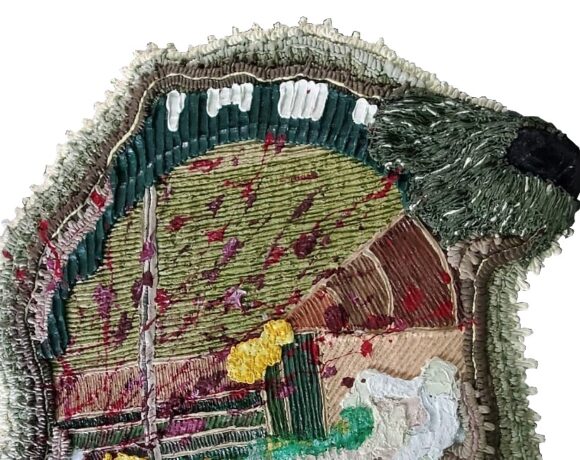The exhibition Plastic Shapes, curated by Ilaria Bignotti and Gino Pisapia, visitable until November 19 at the Florentine spaces of the gallery Tornabuoni Contemporary Art, takes part constructively in contemporary expositive reality as the Francesca Pasquali‘s first solo exhibition in the Tuscan capital, as well as a useful appointment to take stock of the work of an interpreter who, with assets of numerous solo and group exhibitions both in Italy and abroad and co-founder of the artistic movement Italian Resilience is deservedly emerging in the current art scene.
The work of the artist, experimenter of new materials and visual alphabets, can be considered as a complete proposition of different syntactic cues, able to blend in the articulation of a single composition. In fact his lexicon flips from installation, sculpture, painting, always qualifying the aesthetic possibilities of executive devices employees inside consistent plastic textures. Her research, so, goes to recover – in new terms – a poetic of the material and of the object that approaches her technically but with a different poietic nature, to the accumulation and assemblage practices of Nouveau Realism when they are arranged in sequences or groups, to what expressed by the kinetic-programmed experience when, analyzing the dynamics correspondences, “It uses the ambiguity of flickering and vibrating form to suggest a number of interpretations, while compensating for the lack of physical movement of the work “[1] and to some variations of Italian Pop Art when she uses synthetic bristles or for the the resulting dichotomy between natural and artificial. The attention to materials and objects, frequently coming from industrial waste as polymer, PVC, or foams, or foam, or most commonly used as bracelets, balloons and straws, combined with technical expertise, executive sophistication and creativity, gives them – recalling precepts of Arte Povera and Conceptualism – the possibiliy of reveal their object, tactile, chromatic and combinatorial qualities, denoting all of a certain avantgarde caliber. In fact, observing families of artworks such as Spiderballs, Frappa, Bristles, Weaves or the famous Straws – compositions obtained through the paratactical arrangement of incalculable amount of straws – we see how all materials used by Francesca Pasquali, calling in a new condition of artistic significance, freeing themselves completely from any functional limitation and constraint utility that prevented them to externalize the implicit expressive potential, thus improving their communication skills.
The overall result is a visual grammar that decoding in the dialectic of physicality and virtuality, science and aesthetics, implementing a speculative activity in favor of “the unexpressed energy of the unusual material, enhancing its aesthetic potential and investigating, so, the new relations with the language of the art“[2], transforming – finally – its own specificities in active and self- determining narrative means.
[1] See: G. PISAPIA, The indiscreet charm of the matter, in Plastic Shapes, exibithion catalog Tornabuoni Contemporary Art , Florence , 2015, pp. n. n.
[2] See: I. BIGNOTTI, Francesca Pasquali dares creative and critical risks, in ” Title “, Year III, No. 5, Winter/Spring 2013, Perugia, p. 13



Per tutte le immagini: Francesca Pasquali, Plastic Shapes, veduta della mostra presso la Galleria Tornabuoni Arte Firenze, 2015 photo Valentina Grandini

Contemporary art critic and curator, he has curated exhibitions in galleries, independent and institutional spaces. He has lectured in Italy and abroad. His texts and research are published in catalogs, sector magazines, gallery editions and monographs. He is the curator of artist archives, contributor to specialized magazines and press offices. He collaborates with foundations, public museums, publishing houses and universities on research and curatorial projects.







NO COMMENT